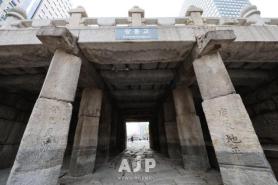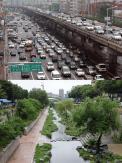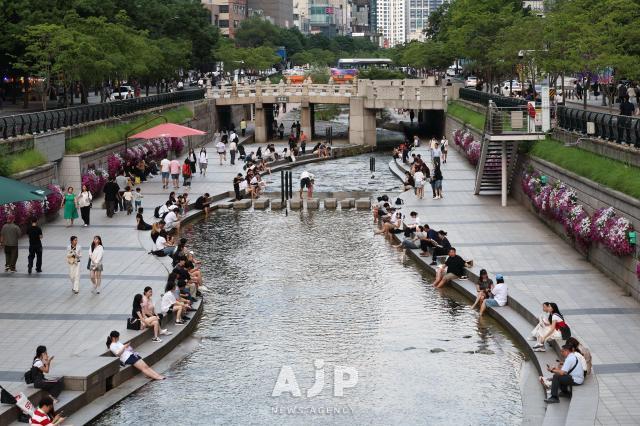
SEOUL, June 24 (AJP) - In the heart of this bustling metropolis, a remarkable scene unfolds along the Cheonggyecheon Stream.
Citizens dip their bare feet into the cool water, some engrossed in books, others in animated conversations with friends, colleagues, and international visitors.
The clear stream teems with life: stately carp glide beneath the surface, while herons, observed with curious delight by passersby, patiently stalk fish. Families of mallards, foraging for sustenance, are a common and charming sight.
This verdant corridor, a testament to ambitious urban planning, stands as a prime example of transforming an imagined ideal into a tangible reality. Stretching 8.12 kilometers from Cheonggye Plaza to its confluence with the Jungnangcheon Stream, Cheonggyecheon’s journey from a natural waterway to a modern urban amenity is a saga of resilience and renewal.
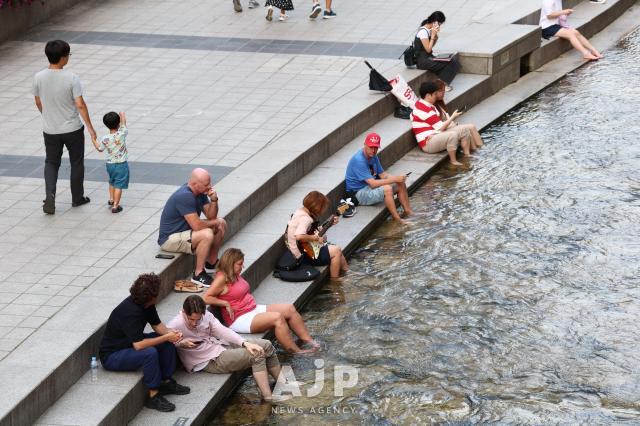
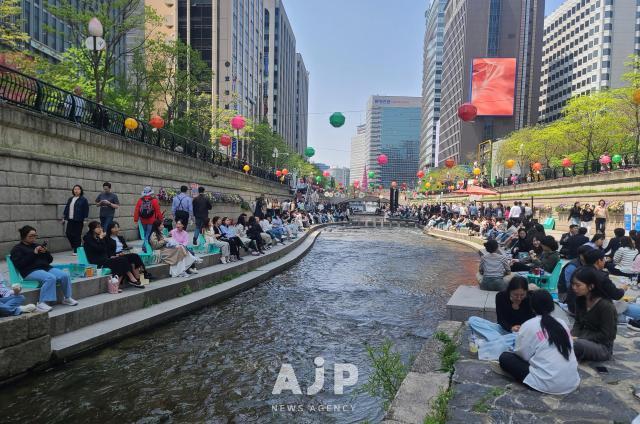
Before the Joseon Dynasty, Cheonggyecheon was a natural stream, albeit one with significant drawbacks. Prone to severe flooding that inundated homes, and serving as an open sewer for household waste during drier periods, it was a source of widespread unsanitation.
Historical records indicate that the Joseon Dynasty undertook periodic maintenance and dredging, with a commemorative monument near Gwangtonggyo Bridge still marking these early efforts.
The mid-20th century, particularly after the Korean War, saw Cheonggyecheon devolve into one of Seoul's most notorious slum areas. Addressing this pressing social and environmental challenge led to the audacious Cheonggyecheon covering project. In three distinct phases between 1958 and 1977, the stream was systematically encased, and atop this newly created land, an elevated highway rose.
The Cheonggye Elevated Highway, in its time, was a powerful symbol of South Korea’s modernization. Yet, by the mid-1980s, an explosion in vehicle ownership transformed it into a notorious chokepoint, exacerbating traffic congestion across the city. By the early 2000s, the elevated structure itself showed signs of severe aging and structural fatigue.
In 2002, Lee Myung-bak, then the newly inaugurated mayor of Seoul, championed a bold vision: the demolition of the elevated highway and the ambitious restoration of Cheonggyecheon.
On June 30, 2003, the highway was closed, followed by its systematic dismantling. From July 1, 2003, to October 1, 2005, the covering over Cheonggyecheon was removed, and the stream was meticulously brought back to life.
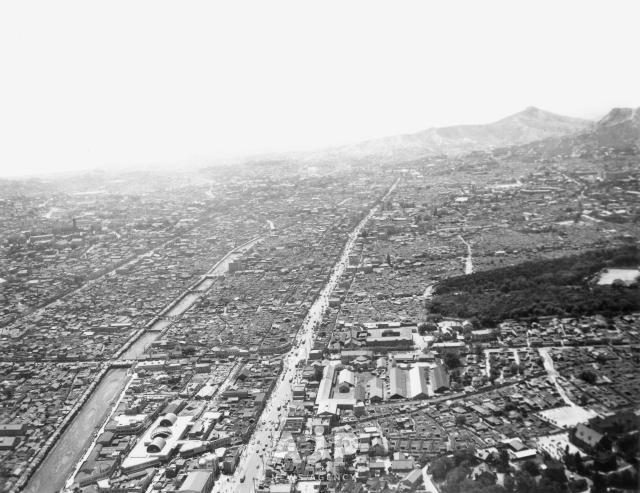
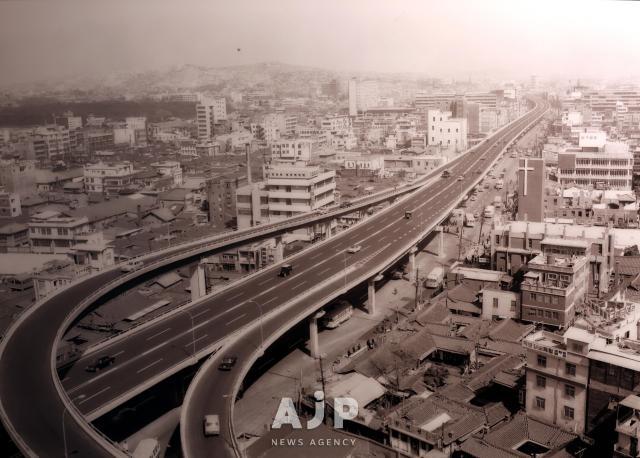
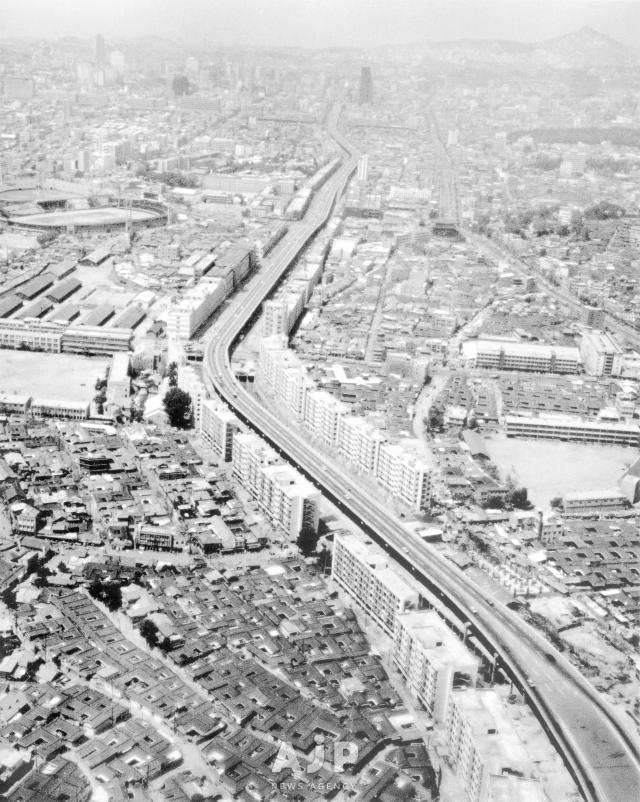
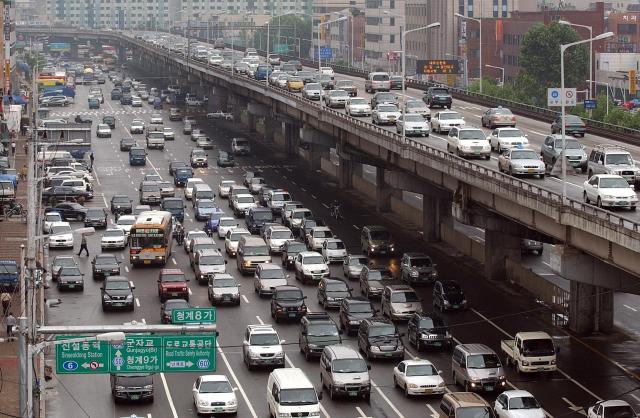
To ensure a continuous flow of water, the Seoul Metropolitan Government now pumps purified water from the Han River, supplemented by groundwater collected from subway stations.
This commitment comes with a significant annual maintenance cost, approximately 10 billion won, but it underpins the stream’s vitality and cleanliness — a rarity in a major urban center.
A Thriving Ecosystem and Global Landmark
Two decades since its restoration, Cheonggyecheon has flourished, evolving into a vibrant ecological corridor.
Lush trees and thriving aquatic plants now define its banks, attracting indigenous fish species like minnows and pale chub, as well as a variety of birds, including egrets and little egrets.
What was once a blighted urban waterway is now a celebrated landmark. It has become an indispensable stop for international tourists and a frequent destination for visiting government officials keen to study Seoul's pioneering approach to urban renewal.
For those wishing to delve deeper into this remarkable transformation, the Cheonggyecheon Museum offers a comprehensive chronicle of its history.
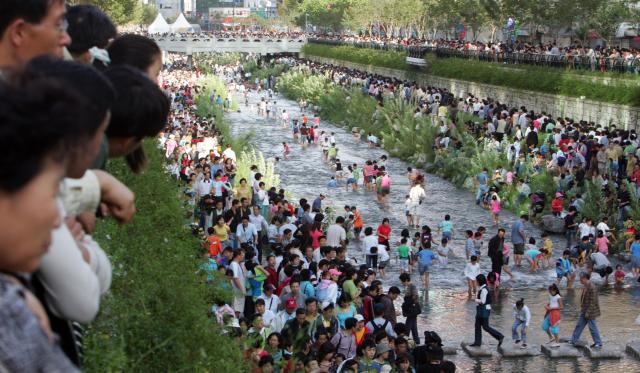

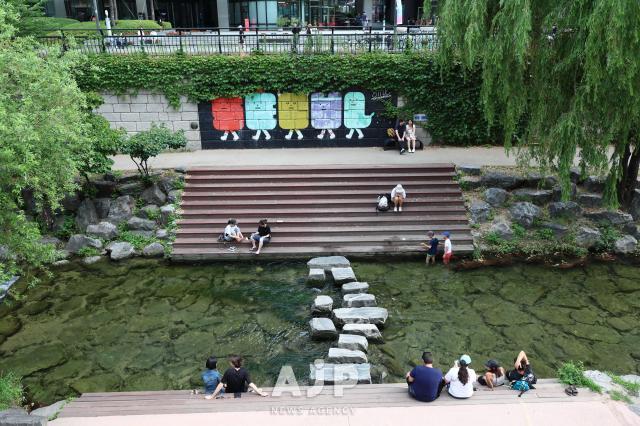
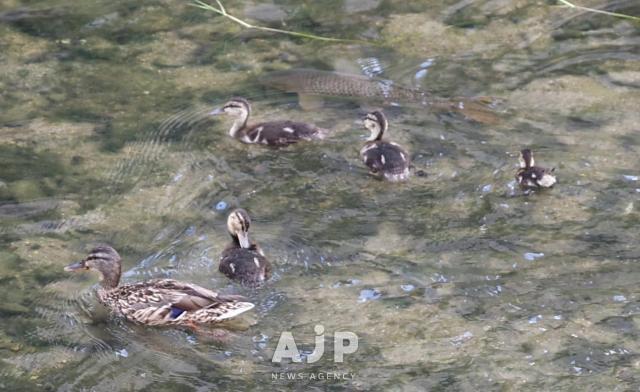




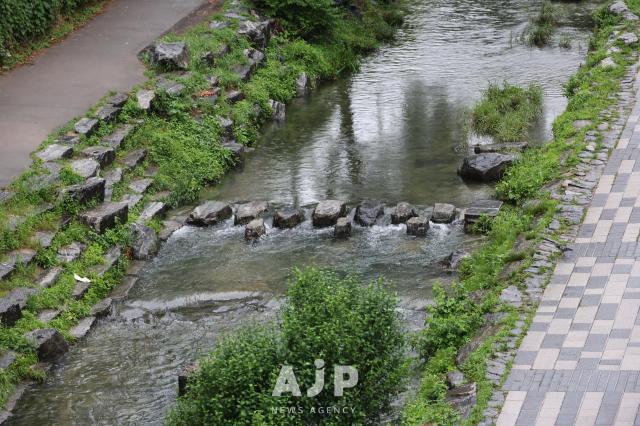

Copyright ⓒ Aju Press All rights reserved.


